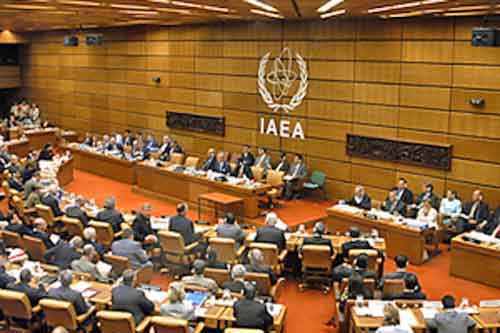“This visit has made significant progress in the process of scientific and technological review through direct on-site confirmation and more detailed data acquisition, but additional analysis and confirmation work is planned for more precise judgment,” said Yoo Gook-hee, head of the inspection team, according to World Nuclear News. “Based on this, we plan to comprehensively evaluate Japan’s plans for Fukushima-related water pollution and disclose the results.”
The Korea Herald reported Wednesday that the team of experts would conduct an additional review.
The wastewater release plan has also sparked popular protests in South Korea, where 85% of people oppose the proposal, according to a survey released last week by the Korea Federation for Environmental Movements.
“The Pacific Ocean is not some dump where contaminated water from Fukushima can be deposited. Japan must comply with [United Nations] conventions and the U.N.’s vision of protecting the oceans,” a coalition of South Korean activists said in a statement ahead of a May 22 demonstration in Seoul’s Gwanghwamun Plaza, according toThe Hankyoreh.
“Since the Pacific is the largest ocean in the world, pollution in the Pacific would soon spread to every ocean in the world,” the activists added.
Common Dreams reported in 2012 that fish contaminated with radioactive cesium from Fukushima were found off the California coast months after the disaster.
Nuclear and public health experts have also weighed in against dumping radioactive wastewater into the ocean, even as others argued the plan poses “zero risk to human life.”
Tilman Ruff, an Australian infectious diseases and public health physician who co-founded of the Nobel Peace Prize-winning International Campaign to Abolish Nuclear Weapons, said during a Friday Australian Broadcasting Corporationinterviewthat dumping Fukushima water into the Pacific would be “a really unfortunate regressive step.”
“It’s applying a 19th-century ‘dilution is the solution to pollution’ approach to a problem that really should be dealt with in a much more modern way,” he continued. “They haven’t really considered adequate alternatives to store this water to use it in ways that don’t have long-term transboundary and transgenerational impacts across the Pacific.”
Ruff said the best course of action would be to “clean the water as best you can, then use it in concrete for structural applications like building foundations, bridges, under roads, where it’s not gonna have a lot of contact with people, and where some of the important radioactive releases… will be trapped in the concrete, where it’s much safer.”
“There are also options of long-term storage, because radioactive materials decay over time,” he added.
‘Tilman Ruff says the danger is that dumping the contaminated water could settle on the sea floor or concentrate up the food chain.’#Fukushima #nuclear #nuclearenergyhttps://t.co/4inM9q5LU2
— Dr Paul Dorfman (@dorfman_p) May 28, 2023
Marcos Orellana, the United Nations special rapporteur on the implications for human rights of the environmentally sound management and disposal of hazardous substances and wastes, told Al Jazeera earlier this month that he does not believe the IAEA is the neutral body it claims to be.
“The IAEA has a mandate to accelerate and enlarge peaceful atomic energy,” he said. “Why would the IAEA, on the same day that Japan announced its decision to discharge the contaminated water… come out publicly in support of Japan?”
“How this impacts the food chain, how this impacts human health, this is not at all clear,” Orellana added. “Alternatives are expensive, but even more expensive is the cost of contaminating the Pacific Ocean for hundreds of years with radioactive substances.”
Common Dream’s work is licensed under a Creative Commons Attribution-Share Alike 3.0 License. Feel free to republish and share widely.
[content id=”79272″]
Pages: 1 2



